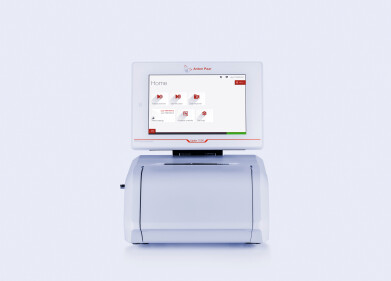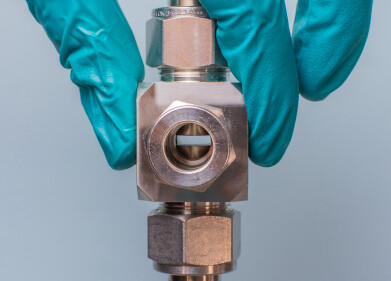Mass Spectrometry & Spectroscopy
What Exactly is Bile?
Mar 23 2020
A study from Michigan State University (MSU) has shed new light on bile, an acidic body fluid that's produced in the liver and released into the intestine during food consumption. The findings were published in the journal Nature and explain how the team discovered a new strain of bile acids produced not by enzymes but by microbes in the gut.
Bile acid was first discovered in 1848 by German scientist Heinrich Otto Wieland, who was awarded a Nobel Prize in 1928 for his research into the molecular structure of the fluid. Over the following decades researchers such as Robert Quinn, lead author of the study and assistant professor of biochemistry and molecular biology at MSU, have continued to explore the properties and functions of bile.
"Since then, our understanding of the chemistry of bile production in the liver was that the cholesterol backbone of the bile acid structure is linked to the amino acids glycine or taurine to produce our primary bile acids," says Quinn. "It begs the question of how the new bile acids we've discovered have remained hidden during the last 170 years of bile acid chemical research."
New bile acids produced by gut microbes
Unlike the bile discovered by Wieland, the new bile acids are created by microbes in the gut. The study explains how the cholesterol backbone conjugates with other amino acids in the gut to exchange genetic material create unique bile acids. For Quinn and his team, the discovery unlocks new insight into how the digestive system works and highlights the importance of the gut microbiome.
"These molecules can alter signalling pathways in the human gut that result in a reduction of overall bile acid production, representing a new mechanism where our gut bacteria can manipulate our own physiology," says Quinn.
Paving the way for new gastrointestinal disease research
Levels of the new bile acids were higher in the guts of patients suffering from gastrointestinal diseases such as cystic fibrosis and Crohn's disease, suggesting the study could be used to develop new treatments. "Clearly, our understanding of these compounds is in its infancy," says Quinn. "This exciting new discovery opens more questions than answers about these compounds and their role in our health."
New technologies play a pivotal role in supporting new research and developing biopharmaceutical products. To find out more about the latest native mass spectrometry (MS) developments don't miss 'Comprehensive Characterisation of Monoclonal Antibodies Using Charge Variant Analysis Coupled to High-Resolution Mass Spectrometry', which offers commentary from experts at Thermo Fisher Scientific (UK) Ltd.
Digital Edition
Lab Asia 31.6 Dec 2024
December 2024
Chromatography Articles - Sustainable chromatography: Embracing software for greener methods Mass Spectrometry & Spectroscopy Articles - Solving industry challenges for phosphorus containi...
View all digital editions
Events
Jan 22 2025 Tokyo, Japan
Jan 22 2025 Birmingham, UK
Jan 25 2025 San Diego, CA, USA
Jan 27 2025 Dubai, UAE
Jan 29 2025 Tokyo, Japan



















